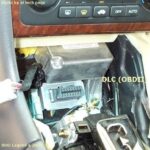OBD2 ports allow mechanics and car enthusiasts to access a vehicle’s diagnostic information. However, mistakes when working with the OBD2 port, specifically concerning power supply, can lead to issues. One common error involves using a high current power supply when connected to the car’s battery terminals. Even a brief accidental grounding can result in severe consequences, potentially damaging the battery or causing burns from intense heat.
A safer approach utilizes a low-current battery charger, such as a NOCO G3500, which has a maximum output of 3.5 amps. This type of charger provides sufficient power for OBD2 tasks without the risk of significant damage if a short circuit occurs. Similarly, a low-amp hobbyist power supply (e.g., 12V/1 amp) offers a safe alternative. Accidental shorts with these devices simply reduce the voltage without causing harm.
High current jump starters, like the NOCO GB40, are not recommended for this purpose. These devices often require a specific load from a connected battery to activate their high output (up to 500 amps). Disconnecting the battery and presenting the jump starter with only a small load (like the 70 mA draw of an OBD2 device) can lead to unpredictable behavior unless the override function is used, which is highly dangerous in this context.
If problems arise after working with the OBD2 port and the vehicle’s electrical system is unresponsive, a blown fuse is a likely culprit. Many OBD2 ports incorporate a 7.5 amp fuse on the 12V line. Check this fuse for continuity. While a blown OBD2 fuse might trigger a fault code, it rarely causes a complete system shutdown. Also, ensure the battery connections are secure. Using a voltmeter, measure the voltage at the battery posts (expecting around 12.6 volts) and then again on the terminals slightly away from the posts. A significant voltage drop indicates a connection problem. Understanding how Obd2 Memory interacts with the vehicle’s electrical system and using appropriate power supplies are crucial for avoiding damage and ensuring safe operation.

